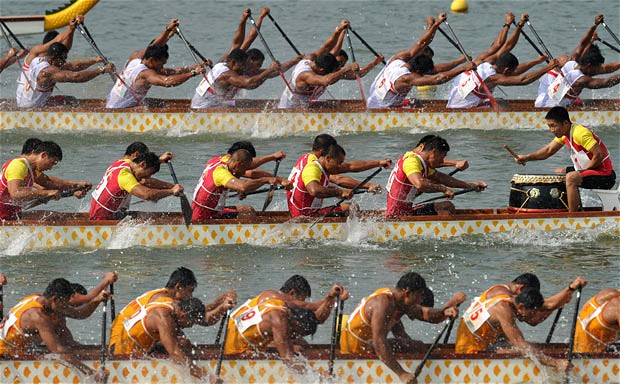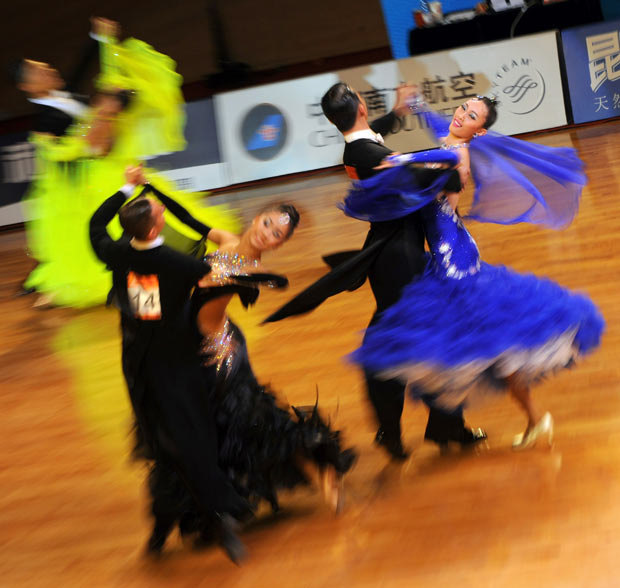Asian Games 2010 in pictures
The 2010 Asian Games, also known as the XVI Asiad, is a multi-sport event in Guangzhou, China that began on 12 November and finishes on 27 November 2010. Guangzhou is the second Chinese city to host the Games, after Beijing in 1990. A total of 476 events in 42 sports will be contested by athletes, making it the largest event in the history of the Games. It will also be the last iteration of the Games to have featured such big events, as the Olympic Council of Asia (OCA) have enforced new hosting rules for future games, beginning with the 2014 Games.
The Asian Games is a showcase for the best athletes Asia has to offer. It is also showcases some sports so obscure outside their homelands that they are giving even Asia a touch of culture shock.
Take kabaddi, for example. Probably the closest counterpart for this sport outside of its native India is playground tag. Kabaddi is played between two seven-member teams on a court with a line drawn down the middle. A "raider" from one team is sent to the opposing half, all the while chanting "kabaddi, kabaddi, kabaddi" on one breath - inhaling during a raid is against the rules. Raiders score points by touching players from the opposing team and getting back into his/her own half without being caught or tackled to the ground.
If the catchers manage to prevent the raider from returning to his side of the court, their team gets the point. Because it is cheap and easy to play, kabaddi is a staple in rural parts of India, Pakistan, Nepal and Sri Lanka. It has been recognised as the national sport of Bangladesh since 1972. But it's pretty much unheard of anywhere else, even the rest of Asia. (http://www.171english.cn)
Sepaktakraw, played primarily in Thailand and Malaysia, is like volleyball, but with a no-hands rule. Three players cover the court, which is divided by an eye-height net. They serve, save and spike, often while airborne with their feet. They can also use their heads, shoulders and chests to keep the hollow, woven ball aloft.
The game dates back some 500 years, when the object was just to keep a rattan ball in the air as long as possible. Later on, a net was added and a set of formal rules established in 1960. The introduction of a synthetic ball in 1984 added a new element of speed. It's now a staple of the Asian Games, though Thailand still usually win.
The martial art of wushu is China's contribution to the games. The most artistic of the fighting sports, wushu focusses on "taolu," elaborate set routines, with or without weapons like spears and swords, more than on actual sparring, or "sanshou."
Competitors wear shiny silk uniforms, often in bright colours, to add to the aesthetic effect.
Dragon boat racing goes back over 2,200 years and has its roots in the legend of Qu Yuan and the sacrifice he made for his country in the third century BC, when he drowned himself in the Milo River in southern China.
DanceSport becomes an official Asian Games sport this year. It developed out of the narrow confines of competition ballroom dancing. But today it includes any dance style which has achieved an internationally recognised competition structure and has adopted a sports based culture.
RollerSports also makes its debut at this year's games. Categories include speed skating and artistic skating.
- PEP人教版小学英语三至六年级录音(含每页听力文本和单词表)
- 〖人教版PEP小学英语三至六年级英语教材的mp3〗
- 2013年新版外研社新标准小学三年级上册英语全册课文录音下载
- 人教版新目标英语九年级全册录音(含听力文本+翻译+单词表)
- 人教版新目标英语七年级上册录音(含听力文本+翻译+单词表)
- PEP新版四年级下册英语电子课本(附音频mp3)
- PEP六年级下册英语电子课本和课文录音下载(2015年春季新版)
- 新版外研社八年级下册英语电子课本和录音下载目录
- 最新版PEP五年级下册英语电子课本和课文录音下载(2015年春季)
- 2016年全国各地高考英语真题和听力下载目录
- 新版外研社新标准四年级下册英语电子课本和录音下载





